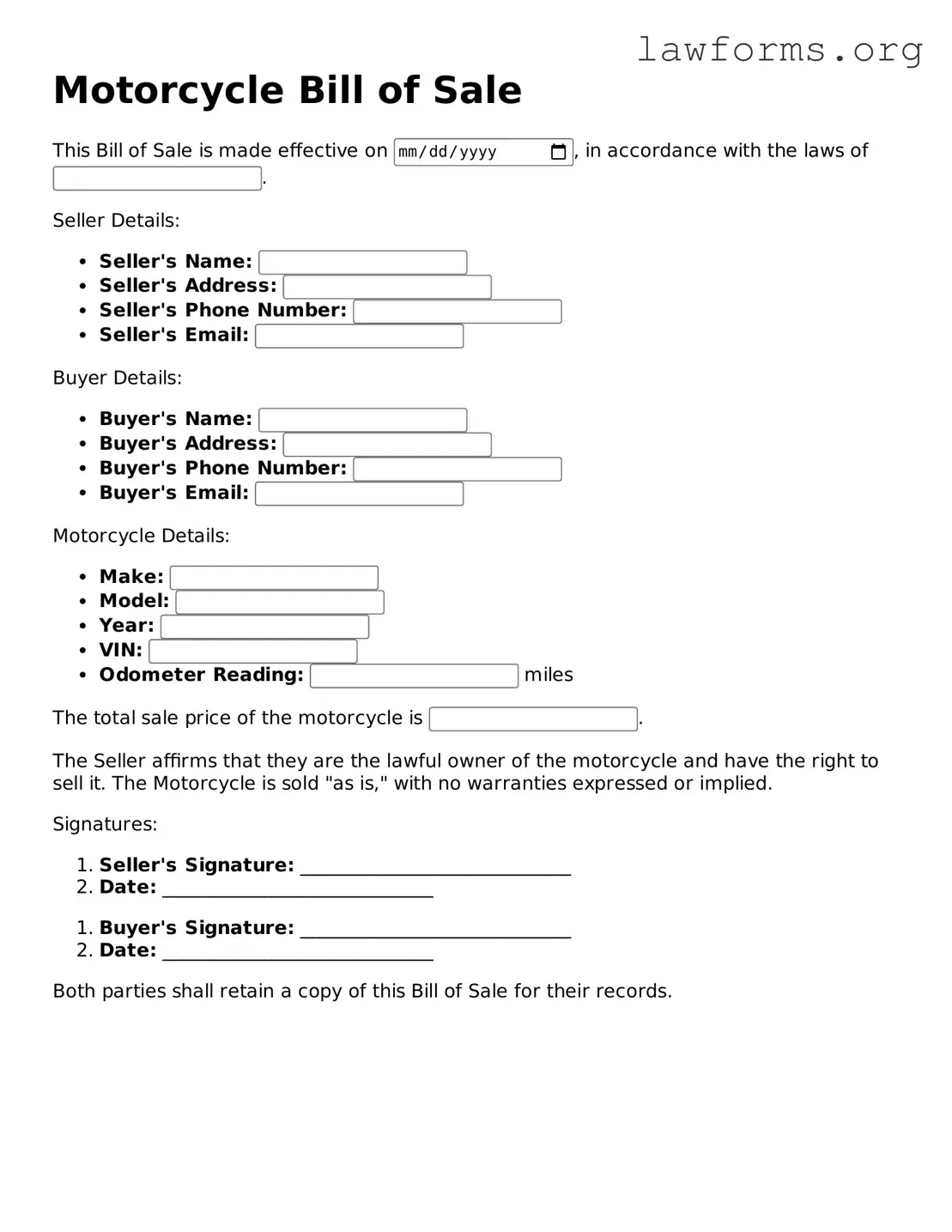Valid Motorcycle Bill of Sale Form
A Motorcycle Bill of Sale is a legal document that serves as proof of the transfer of ownership from the seller to the buyer. This form outlines essential details such as the motorcycle's make, model, year, and Vehicle Identification Number (VIN), along with the purchase price and the names of both parties involved. Ensuring that this document is properly filled out is crucial for a smooth transaction; start by filling out the form by clicking the button below.
Customize Document Online
